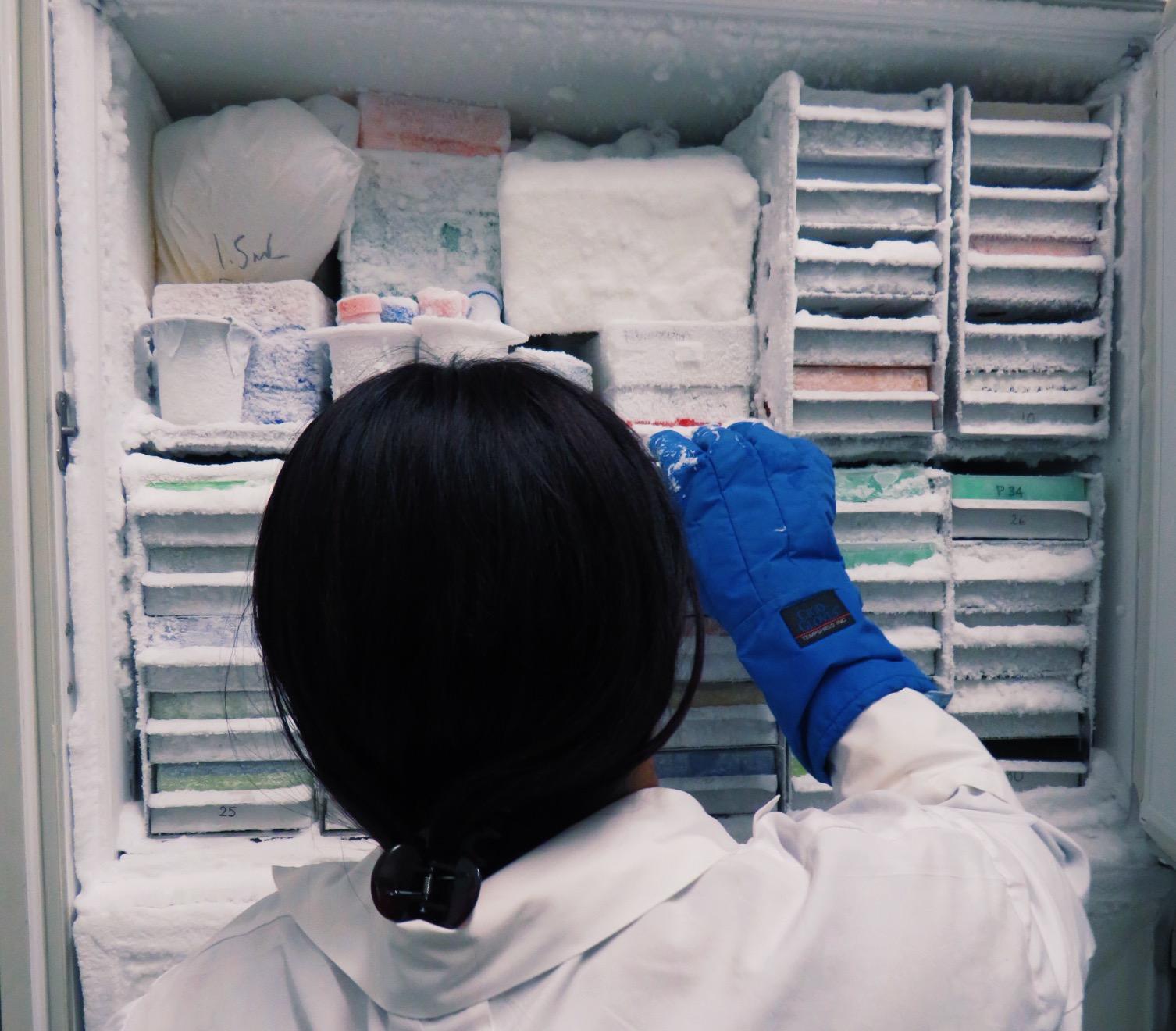Dr. Reinhardt's lab has been profiled by the őŘőŘ≤››ģ ”∆Ķ Reporter.
Sustainability in research: If you want to green your lab, start with the freezer
Cell biology researcher Dieter Reinhardt explains why his lab is cool with turning up the temperature of their freezers
ĶĢ≤‚ŐżMaya Willard-Stepan,¬†Communications Intern, őŘőŘ≤››ģ ”∆Ķ Office of Sustainability
APRIL 6, 2023
ŐżŐżŐż
 Members of the Reinhardt lab use ultra-low temperature freezers to store reagents and other biological samples.Siddhi Aubeeluck
Members of the Reinhardt lab use ultra-low temperature freezers to store reagents and other biological samples.Siddhi Aubeeluck
If you spend time in the , you will likely see members of the lab reach into the ultra-low freezers to access biomedical samples needed for their work. What you wouldn’t notice is that the freezer is several degrees warmer than it was in the past. In an effort to reduce the environmental impact of their research as well as the strain on their equipment, Dieter Reinhardt’s team raised the temperature of their freezers from the standard -80 degrees Celsius.
While ultra-low temperature freezers are crucial to preserving tissues, enzymes, antibodies, and other biological research samples, often the temperature is chosen .
Despite these machines being dubbed ‚Äú-80 freezers‚ÄĚ, there is no scientific reason behind that number when it comes to maintaining the quality and safety of samples. What‚Äôs more, increasing a freezer‚Äôs temperature from -80 C to -70 C or even -65 C can¬†. With hundreds of ultra-low temperature freezers at őŘőŘ≤››ģ ”∆Ķ, this would be no small change in terms of the University‚Äôs total energy consumption and the associated financial savings.
‚ÄúCompressors have to work very hard to maintain these ultra-low temperatures,‚ÄĚ said Reinhardt, PhD, and Canada Research Chair Tier 1 Laureate in Cell-Matrix Biology. ‚ÄúThis requires a lot of electricity, but it‚Äôs also hard on the compressors and will shorten the lifespan of your equipment, which is expensive to repair and replace. Increasing the temperature by just a few degrees can add years to this equipment and decrease how often you have to defrost it.‚ÄĚ
How cold is cold enough?
The answer isn‚Äôt quite as simple as one-temperature-fits-all. ‚ÄúExperience has taught me that for my reagents, there‚Äôs not too much difference between -80 C and -65 C, which is what we‚Äôre using now,‚ÄĚ Reinhardt said. ‚ÄúBut if you‚Äôre storing lots of messenger RNA, for example, your freezer might need to be colder because these reagents are the most sensitive to degradation.‚ÄĚ
For researchers working with samples that are difficult to acquire or take years to cultivate, the hesitation to change the temperature of their cold storage is understandable. This is why lab users around the world are working together to address this uncertainty by¬†¬†on how well specific reagents keep when stored in less cold ‚Äď but still very, very cold ‚Äď temperatures. Campaigns such as the¬†initiative, led by longtime independent sustainable research consultant Allen Doyle, are also encouraging scientists not to associate a specific temperature with their freezers.
Turning up efforts… and temperatures
This movement isn‚Äôt novel on őŘőŘ≤››ģ ”∆Ķ campuses either. In 2011, researchers in the Faculty of Medicine received support from the Sustainability Projects Fund (SPF) for a¬†Green Biobanking¬†project, which helped labs implement a safe and effective technique for storing DNA samples at room temperature as an alternative to long-term freezer storage.
‚ÄúThe reality is probably 80 to 90 per cent of the typical items stored in an ultra-low freezer are not being actively used and may never be,‚ÄĚ Reinhardt said. ‚ÄúSince it takes so long to generate sophisticated reagents, you don‚Äôt just get rid of the unused materials. You store them because they could very well be used in future experiments.‚ÄĚ As well as minimizing the energy used to keep research ‚Äėleftovers‚Äô, ‚Äúit‚Äôs very important to have an accurate inventory of what is in the freezer and periodically review it,‚ÄĚ he added, to avoid losing track of samples due to high user turnover in the lab.
These sustainable lab practices and others are all steps that lab users can take as part of the¬†. This year, őŘőŘ≤››ģ ”∆Ķ is even offering its own prizes for labs that participate in the free competition, which has helped save more than 24 million kWh of energy worldwide since its creation six years ago.
Sign your lab up¬†for the International Freezer Challenge and find őŘőŘ≤››ģ ”∆Ķ-specific resources and tips for how to take action on the¬†Office of Sustainability website.